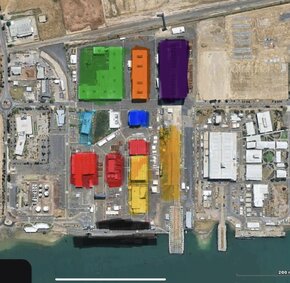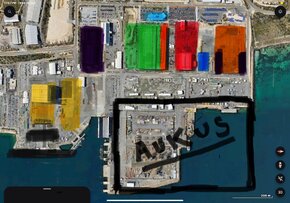Effectively Henderson (Civmec plus Silveryachts) in final form would have four large bays and two small bays (all 170m plus in length) for use across the GPF, LCH and LOCSV programs and possibly future patrol boats. They could be used for a range of purposes, but at maximum capacity I would think that each could be used for final ship assembly, matched to vessel size. The small bays are long enough that you might get two smaller vessels (sub 80m) in at a time.Civmec with an extra 2 bays at the silveryachts site would be the same as Osborne.
One fabrication hall, one hall would be for consolidation of units and one would be for block assembly. (+separate pipe and paint sheds)
The 2 shorter outer bays in the main hall would likely be dedicated to the LCH program after the Arafura build.
So potentially 8 hulls in build at full rate, not including anything in the water. It would be busy, but possible. I'm not saying that is what it would do, just that it would be possible. Call it maximum wartime crazy rate.
The six bays above would all be able to share the broader site infrastructure for unit construction, fitout and painting. I would view these would be large enough to handle this side of the work for all programs without need for the above bays.
The main Civmec fabrication building (the northern one) is a taj mahal in its own right. This is near twice the size of the Osborne fabrication shed and almost the same size footprint as the main Civmec hall (the southern one). Its possible that a lot of unit assembly, particularly smaller sections, could be done within the fabrication building, in addition to sheet cut and weld.
There are two additional paint and fab combo sheds in the Civmec area, one of which is also large enough to do bigger block assembly (80m x 60m). Plus there are pipe fab sheds.
There is space in the Henderson area if needed to build additional block assembly, fabrication or painting buildings if needed. There is a lot of space.
Osborne for comparison has two 190m assembly bays, one 160m block assembly shed and then its fab shed (plus a bunch of smaller ones).
Last edited:


